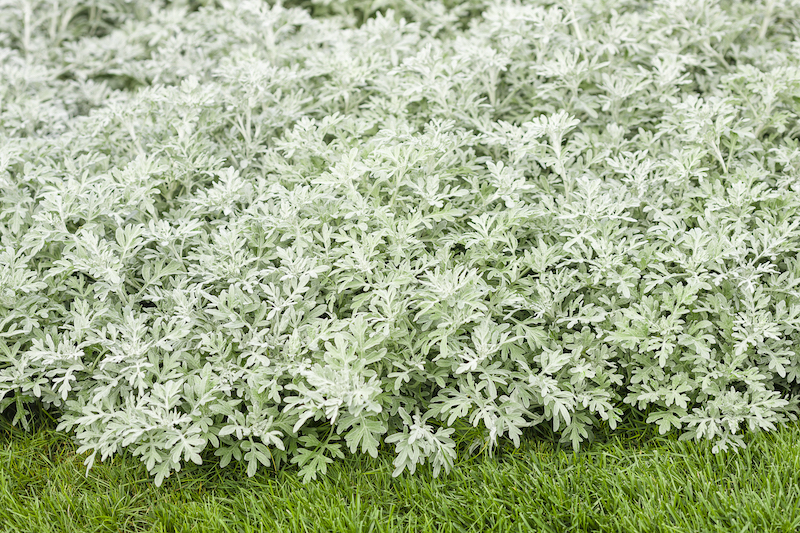Growing Artemisia
Artemisia is a flowering perennial made up of hundreds of different species, varying widely in appearance. Some cultivars grow up to 5 feet tall and 10 feet wide and boast summertime flowers and filigree-like leaves. This plant is known for its tolerance for dry, sunny locations, making it easy to look after. This fast-growing plant has a clump-forming growth habit that allows it to fill a garden bed quickly. Artemisia is a hardy plant that can be grown in various climates but may die back in frigid temperatures. Depending on the variety, Artemisia grows in USDA zones 3 through 10.

Planting Artemisia
Choose a location with well-drained soil and full sun to partial shade. Most varieties prefer dry soil, as standing water can cause root rot. Prepare the soil by tilling or digging to loosen it and remove debris or weeds. Amend the soil with organic compost or manure. Water the newly planted Artemisia well, and add a 2-3-inch layer of mulch to retain moisture and suppress weeds.

Watering Artemisia
Artemisia is drought tolerant and low maintenance, so it doesn't require regular watering once established. This plant is well suited to dry areas that receive plenty of sunlight. New plants need regular water to grow a robust root system. While Artemisia thrives in dry conditions, it does require some moisture, so water the plant during an extended drought. Some Artemisia cultivars can live in humid climates but still prefer dry soil conditions.
Fertilizing Artemisia
Artemisia plants are not heavy feeders, and supplemental fertilization is usually unnecessary. Amending the soil during planting and applying organic mulch around the base of the plant in the spring will provide enough of a nutritional boost to help the plant thrive. Plants grown in poor-quality soil will benefit from a balanced, slow-release fertilizer applied in the spring. Avoid plant food high in nitrogen, which can make Artemisia leggy.
Pruning Artemisia
Most varieties of Artemisia are herbaceous perennials, so the stems and greenery die back when the weather turns cold. These plants can be cut back to ground level in the fall, and new growth will appear in the spring. The herbaceous perennial varieties may benefit from mid-summer pruning after flowering is complete. Cut the stems back by one-third to create a full and bushy look. Artemisia plants with a woody structure can be cut back to the lowest growth nodes in the fall.
Caring For Artemisia in Pots
Caring for Artemisia plants in pots is easy. Use dry soil that promotes drainage, and select a pot with drainage holes, so the soil does not become soggy. Water container-grown Artemisia when the top few inches of soil are dry. Plants grown in sunny spots will dry out more quickly and need water more often than those in shade. Watering potted plants leaches nutrients from the soil over time. To replenish the nutrients, apply a balanced, water-soluble fertilizer monthly during the growing season.

Winter Care for Artemisia
Trim back Artemisia plants in the fall or early winter. Herbaceous varieties can be cut back to the ground level, while cultivars with a woody, shrub-like structure can be trimmed back to the lowest set of growth nodes. Container-grown Artemisia can be cut back and moved to a protected area. A good winter home for potted plants is a shed, garage, or basement. The area does not need to be heated, but the container should be out of the elements.
 |
Author Alison Cotsonas - Published 03-11-2023 |
